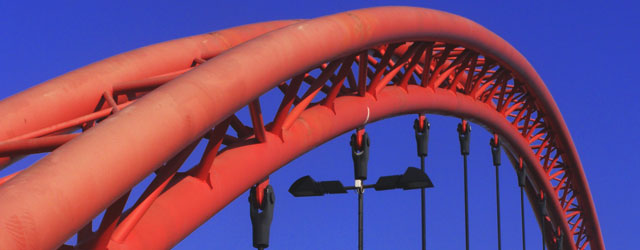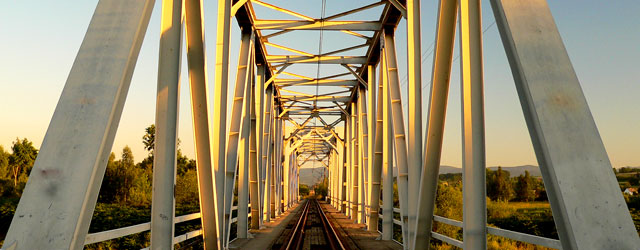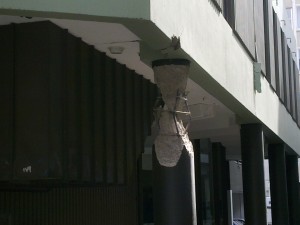Testing of circular concrete columns following the Canterbury Earthquakes has shown that sudden non-ductile failure can occur where the spiral reinforcing complies with the Concrete Structures design standard NZS 3101:1982 cl 6.4.7.1(b).
This clause only required spiral reinforcing spacing to be not greater than 16 times the diameter of the longitudinal column reinforcing steel or 48 times the diameter of the spiral reinforcing steel.
This provision affected concrete columns in structures designed between 1982 and 1995.
Column failure was found to initiate by buckling of the longitudinal steel prior to the steel yielding in compression.
Such column sections may therefore only be considered to be non-ductile, similar in performance to what would be called a Category 4 section in the steel structures standard NZS 3404:1997.
Analysis of the test results using the buckling provisions of NZS 3404:1997 indicates that an appropriate effective length factor to the spiral spacing L may be ke=0.9. This allows an assessment of the nominal buckling capacity of the reinforcing steel to be estimated from which the elastic buckling stress and strain at failure can be estimated.
In columns with spiral reinforcing steel spacing of 16 times the longitudinal bar diameter, the buckling stress has been estimated to be as low as 80% fy for Grades 275 and 300 reinforcing steel, 70% fy for Grade 430 and 67% for Grade 500. In this case fy is the lower 5 percentile yield stress for the grade.
The use of strength reduction factors of 0.7 to 0.9 to the gross section properties allowed by cl 6.4.7.1(b) appears therefore to be inappropriate particulary where such columns will be required to sustain seismic induced drifts as part of Group 2 or associated structural systems.
Use of a reduced or effective reinforcing steel area limted by reinforcing steel buckling may be an interim approach to assessing the strength of such columns. This is similar to the approach used in assessing Category 4 steel column sections. However Categorty 4 columns may not be assumed to be able to sustain any displacement ductility demand.
Similarly concrete columns with strength limited by elastic compression buckling of the reinforcing steel should not be considered capable of sustaining any displacement ductility demand when a drift assessment is undertaken. They should be considered to be non-ductile concrete columns.
If you wish to know more about or require assessment of concrete columns in structures designed between 1982 and 1995 please contact Hyland Fatigue + Earthquake Engineering.





